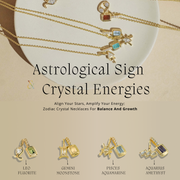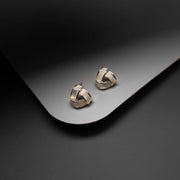What Is Opal?
Opal is a hydrated amorphous form of silica (SiO₂·nH₂O) renowned for its spectacular play-of-color - a dazzling optical phenomenon where flashes of rainbow hues appear as the stone moves. Unlike crystalline gemstones, opal's structure consists of tiny silica spheres arranged in a grid, which diffract light to create its signature iridescence.
Key Geological Characteristics
-
Composition: 3-21% water content in silica structure
-
Hardness: 5.5-6.5 on Mohs scale (softer than quartz)
-
Luster: Vitreous to resinous
-
Sources: Australia (90% of world's supply), Ethiopia, Mexico, Brazil

What Color Is Opal? The Spectrum of Nature's Fireworks
Opal's colors range across the entire visible spectrum, with varieties classified by their body color and play-of-color:
Major Opal Types
| Type | Description | Special Features |
|---|---|---|
| White Opal | Light body with rainbow flashes | Most common variety |
| Black Opal | Dark body (N1-N4) with vibrant colors | Most valuable (especially from Lightning Ridge) |
| Boulder Opal | Thin color veins in ironstone matrix | Unique Australian variety |
| Fire Opal | Transparent orange/red body | May or may not show play-of-color |
| Crystal Opal | Transparent/translucent with clear colors | Highly prized for clarity |
| Hydrophane Opal | Porous Ethiopian opal that absorbs water | Can temporarily change appearance |
Play-of-Color: Caused by silica sphere size (350-700nm) diffracting light - larger spheres create red flashes (rarest), smaller ones show blue/green.
The Science Behind Opal's Magic
Opal's unique properties stem from its nanostructure:
-
Silica Spheres: Arranged in orderly patterns (precious opal) or randomly (common opal)
-
Light Diffraction: When light passes between spheres, it splits into spectral colors
-
Water Content: 3-21% water gives opal its translucency (dries out if not cared for)
Did You Know? Australia's Lightning Ridge produces the world's most valuable black opals, while Ethiopian Welo opals are known for their vivid play-of-color.

Opal in History and Culture
Ancient Beliefs
-
Romans: Considered opal the most precious gem, symbolizing hope and purity
-
Arabs: Believed opals fell from heaven in lightning flashes
-
Aboriginal Australians: Sacred "Rainbow Serpent" stones in Dreamtime stories
Modern Significance
-
October Birthstone: Alongside tourmaline
-
14th Anniversary Gemstone
-
Australia's National Gemstone
Evaluating Opal Quality and Value
1. Play-of-Color (Most Important Factor)
-
Color Range: Red flashes (most valuable) → orange → green → blue
-
Pattern: Harlequin (diamond-shaped) most prized, then broad flash, pinfire
-
Brightness: Vivid > bright > dull
2. Body Tone
-
Black (N1-N4) > dark > light > white
3. Clarity and Transparency
-
Crystal opal > translucent > opaque
4. Carat Weight
-
Large solid opals exponentially more valuable
Price Range: $10-$500/ct for common opals; Premium black opals can exceed $15,000/ct

Metaphysical Properties
Healing Benefits
-
Emotional Healing: Releases inhibitions and enhances creativity
-
Spiritual Growth: Believed to amplify cosmic consciousness
-
Physical Wellness: Traditionally associated with eye health
Chakra Alignment
-
Crown Chakra: Enhances spiritual connection
-
Third Eye: Stimulates intuition
Why Opal Captivates Collectors
From Roman emperors to modern jewelry designers, opal continues to fascinate because:
-
Each stone is completely unique - no two opals show identical patterns
-
Displays every color of the rainbow simultaneously
-
Represents nature's perfect balance between structure and fluidity
Explore our Opal Collection for authenticated, ethically sourced specimens in all varieties.








